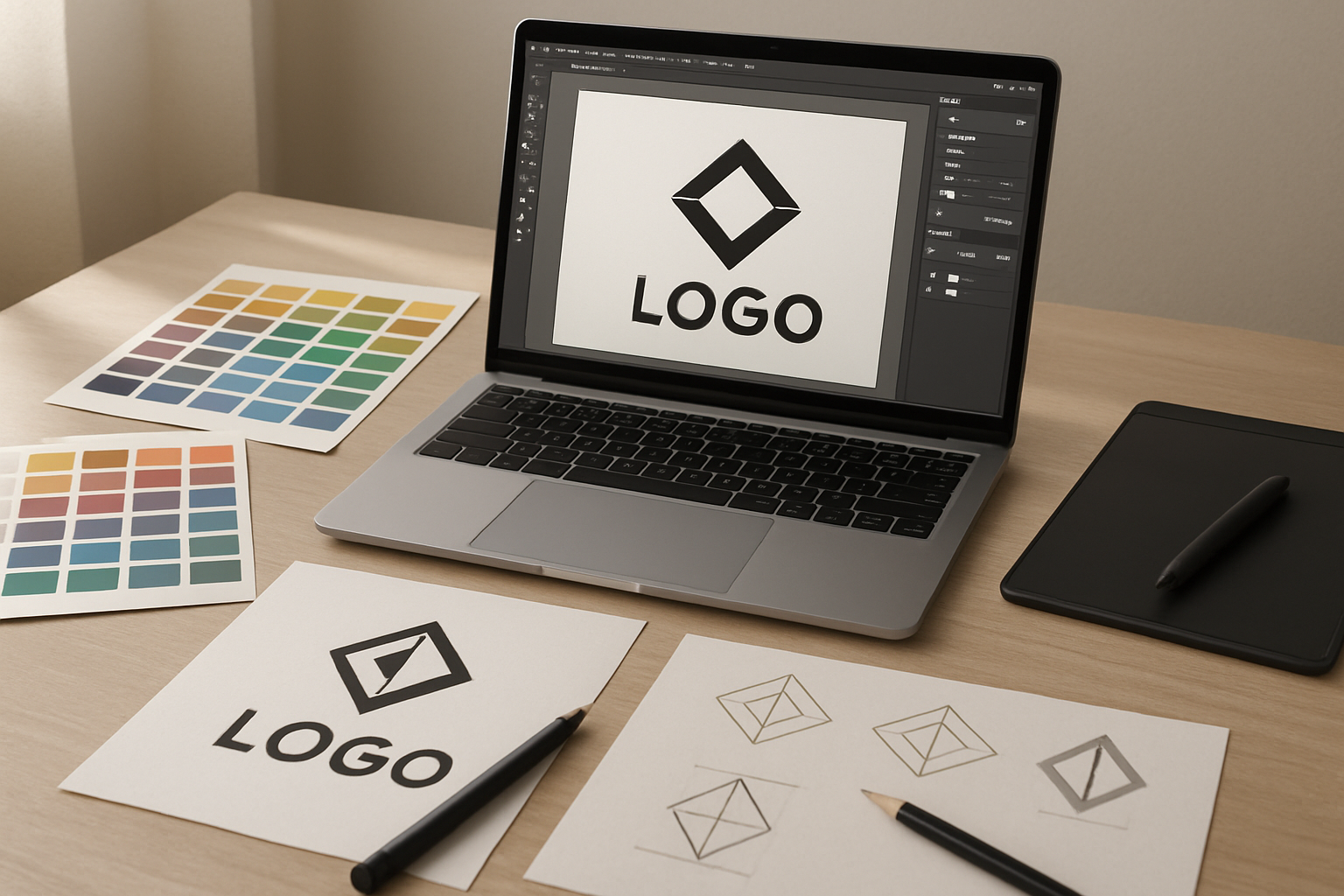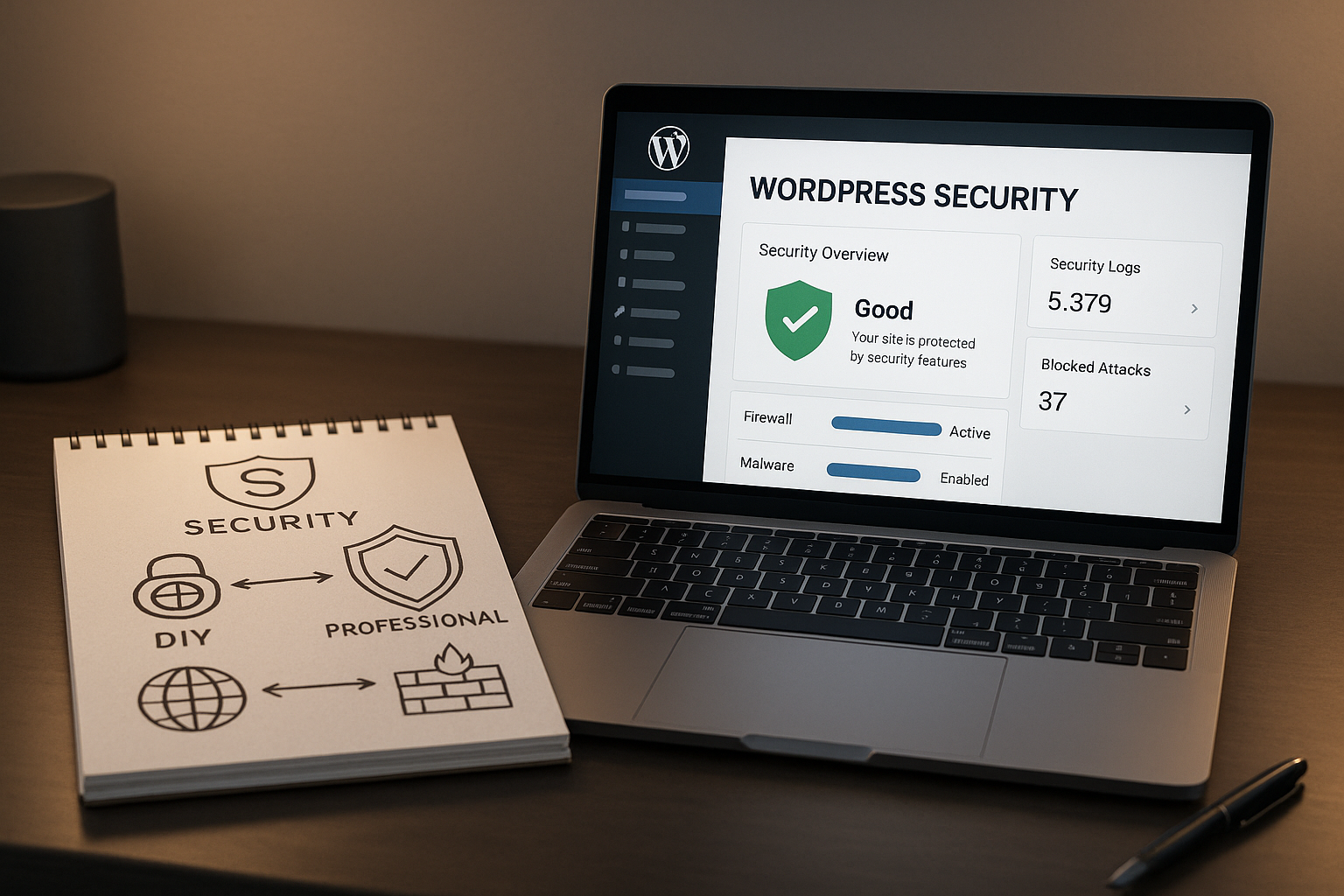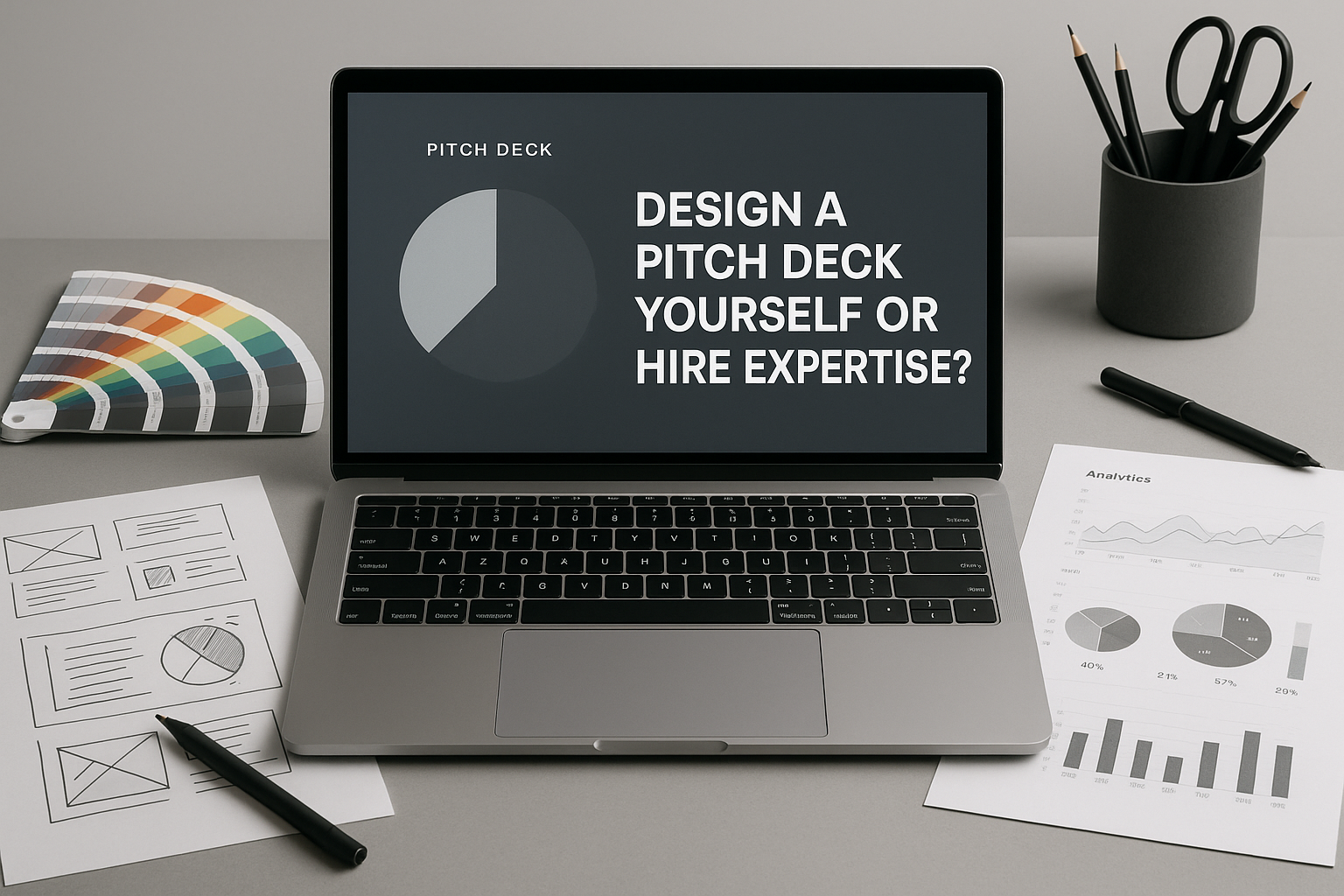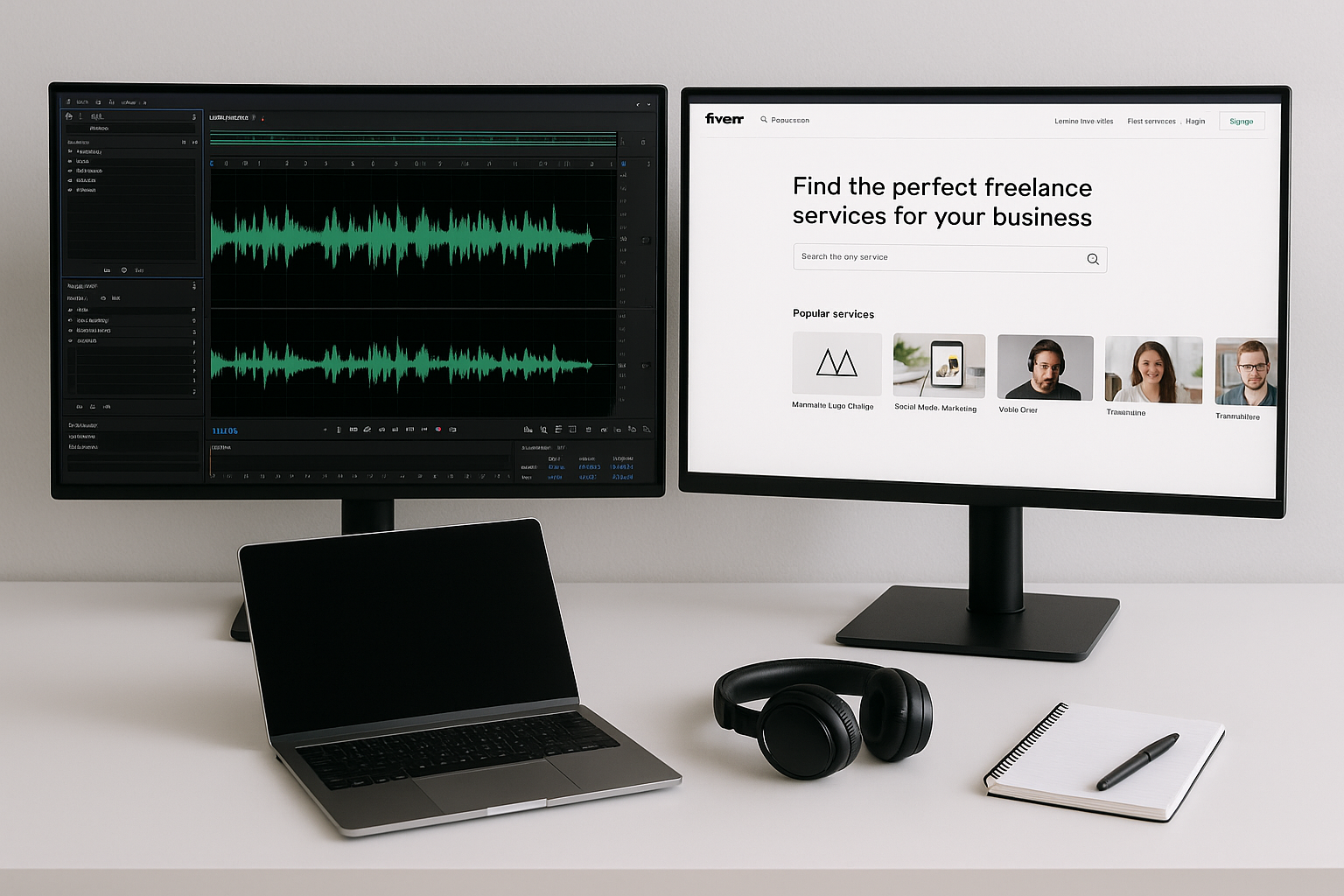DIY logo design vs hiring designer is one of the most pivotal decisions any business owner faces when establishing a memorable brand identity. According to a revealing statistic from LetterLogos, 75% of consumers judge a company’s credibility by its logo alone. This emphasizes how that seemingly simple design can profoundly shape how potential customers perceive and trust your brand.
The logo acts as the visual cornerstone of your overall identity. In many cases, it’s the first encounter people have with your business. Whether you run a budding startup or manage an established enterprise, making the right choice between DIY tools and professional designers can have a lasting impact on brand loyalty and marketplace differentiation.
Some entrepreneurs opt for DIY logo creation using platforms like Canva, while others invest in expert services to ensure high-quality, unique designs. Each approach entails specific trade-offs in cost, quality, and time. By exploring both options, you’ll gain clarity on which solution aligns best with your resources and brand vision.
In this article, we’ll dive deep into these contrasting paths—diy logo design vs hiring designer—weighing their implications for cost, quality, brand impact, and the often-overlooked factor of time saved hiring a designer. Let’s begin with a few standout lessons and then map out our detailed discussion ahead.
Key Takeaways
- A professional-looking logo can elevate credibility: 75% of consumers form immediate judgments based on logo appearance.
- DIY approaches like Canva offer quick, budget-friendly solutions but may result in generic or overused templates.
- Hiring a professional designer often leads to stronger branding, uniqueness, and better trademark protection.
- Outsource branding benefits go beyond the logo, encompassing color theory, typography, and long-term brand strategy.
- The ultimate decision hinges on budget, desired speed, time saved hiring designer, and future brand ambitions.
Why a Logo Matters to Brand Identity
Your logo is more than a mere symbol; it’s a powerful tool for recognition, trust-building, and brand positioning. Data from LetterLogos highlights that consistent visual identity can boost revenue by 23%. When you weigh diy logo design vs hiring designer, remember the ripple effect that a well-crafted logo has on customer loyalty and brand recall.
A compelling logo accomplishes several key functions:
- Instant Recognition: Helps consumers quickly pick your brand among competing options.
- Trust Building: Professional visuals signal credibility, influencing customer decisions.
- Brand Personality: The right blend of colors, shapes, and fonts communicates your core values.
- Memorability: Unique designs leave lasting impressions and enhance repeat business.
Ultimately, your logo sets the stage for how the public perceives your entire brand. Even if a DIY approach saves money in the short term, the long-term return on a well-executed professional logo often justifies a bigger initial investment.
What Is DIY Logo Design?
“DIY logo design” simply means crafting your own logo without professional assistance, often using online platforms like Canva, Looka, or Hatchful. These tools rose in popularity due to their accessibility, low cost, and user-friendly interfaces.
While Canva is widely recognized for its drag-and-drop functionality, Looka and Hatchful similarly provide pre-made templates and AI-driven suggestions to jumpstart the creative process. Many startups prefer this route for convenience or budgetary reasons.
However, HudsonWeekly’s research found 60% of small businesses attempt a DIY logo initially, only to face challenges like file scalability, limited originality, or a steep learning curve in design fundamentals. Ensuring your final design is truly unique—and properly formatted for different mediums—can be surprisingly time-consuming.
Canva vs Professional Designer
The debate between canva vs professional designer showcases the broader contrast of template-driven creation vs custom craft. Below is a concise comparison:
| Feature | Canva | Professional Designer |
|---|
| Design Approach | Template-based, limited unique customization | Original concepts tailored to brand identity |
| File Deliverables | PNG/JPEG, sometimes limited vector | Full vector suite—AI, EPS, SVG, CMYK profiles |
| Trademark Safety | Higher risk of shared visuals | Exclusive artwork, lower conflict potential |
| Scalability | Often raster-based | Scalable to any size without quality loss |
| Upfront Cost | Free or low subscription fees | $300 to $2,000+ |
While Canva remains useful for quick social media graphics, KurtisDesign.com warns that template-based logos lack distinction, which can hinder your ability to stand out. In contrast, investing in a custom concept often yields a recognizable, enduring design that resonates more deeply with your audience.
Pros and Cons of DIY Logo Design
Let’s break down the benefits and drawbacks when you decide to go the DIY route:
Pros:
- Cost-Effective: Many platforms offer free tiers, making initial spending minimal.
- Fast Turnaround: You can produce a design in hours or days.
- Complete Ownership: You control every color, font, and shape from start to finish.
Cons:
- Limited Originality: Shared templates risk ending up with a logo similar to others.
- Lack of Expertise:Amateur mistakes in typography or color theory can hurt brand perception.
- Revision Costs: “Free” can become “expensive” once licensing fees or inevitable redesigns arise.
- Time Investment: AshleyHughes.com indicates business owners commonly spend 10–15 hours just getting comfortable with design tools.
Though the initial outlay seems appealing, overlooking hidden costs and the future potential of your brand could lead to more headaches—and expenses—down the road.
What “Hiring a Designer” Actually Means
Opting for professional assistance can take multiple forms, each with distinct pros and cons:
- In-House Staff Designer: Full-time employee managing all visual branding.
- Freelance Designer: Project-based collaboration with a specialized professional.
- Branding/Creative Agency: Comprehensive team guidance, from concept to brand roll-out.
Standardized processes among professionals often include brand discovery sessions, market research, multiple design drafts, and final brand guideline documents. According to LetterLogos, agencies can range from $5,000 to $50,000+, while a skilled freelancer might charge $300 to $2,000, depending on scope.
With a professional, you tap into strategic thinking and specialized software that supports cohesive, future-proof designs.
Freelance Designer Pros and Cons
freelance designer pros and cons often land between the extremes of costly agencies and bare-bones DIY. Why might you consider this route?
Pros:
- Direct Communication: You work closely with one individual, streamlining feedback.
- Budget Flexibility: Rates are generally lower than agencies yet offer higher uniqueness than templates.
- Personal Touch: Many freelancers adapt their style to match your unique brand voice.
Cons:
- Lack of a full creative team to bounce ideas off.
- Reliance on a single individual can lead to capacity or deadline struggles.
- Quality can vary widely, making portfolio reviews essential.
A CPluz study reported 42% of businesses achieve stronger brand distinctiveness after switching from DIY to an independent designer. That personal collaboration can yield cohesive logos with deeper meaning than stock iconography.
Outsource Branding Benefits Beyond the Logo
outsource branding benefits typically extend well beyond a single asset. A supportive designer or agency will consider:
- Color Psychology: Aligning color choices with emotional triggers that fit your target audience.
- Font Systems: Using consistent typography to maintain brand cohesion and readability.
- Market Research: Ensuring the design resonates in your specific niche and outperforms competitors.
- Scalability: Planning for sub-brands, expansions, or rebrands years into the future.
This holistic approach covers every touchpoint, from packaging to social media headers. According to LetterLogos, a fully realized brand system helps businesses become 3.5 times more recognizable—an advantage that pays dividends over time.
Time Saved Hiring Designer
One often overlooked factor is time saved hiring designer. Let’s quantify how much time typically goes into DIY attempts vs working with a pro:
DIY Path:
- Researching design principles and tutorials: ~5 hours
- Learning and experimenting with design tools (e.g. Canva): ~8 hours
- Multiple iterations and trial/error: ~6 hours
- Total: 19 hours
Professional Path:
- Initial briefing and brand discussions: ~2 hours
- Design feedback and revision feedback rounds: ~1 hour
- Total: 3 hours
From these numbers, the net gain is roughly 16 hours that can be refocused on marketing, customer engagement, and product optimization. Accelerated launch times can also be crucial in fast-moving markets.
Cost Comparison: DIY Tools vs Designers
Next, let’s consider the financial side of diy logo design vs hiring designer. While DIY may appear cheaper initially, the final price can creep up:
DIY Approach:
- Annual platform subscription (e.g., Canva Pro): ~$120
- Occasional font or graphic purchase: ~$50–$200
- Potential trademark disputes: ~$300+ for legal checks
- Future redesign if the logo underperforms: ~$500+
Professional Approach:
- Freelance designer: $300–$2,000 (including vector files)
- Agency: $5,000–$50,000+ with deeper research and brand manuals
When factoring in the average cost of redesigns—often needed if a DIY logo proves non-distinct—the professional route can be more advisable for brands serious about long-term identity.
Quality & Brand Perception
Visual quality significantly influences how customers perceive your business. Research from LetterLogos shows professional logos boost perceived brand quality by 30%. Intricate details like proper kerning, color harmony, and negative space usage demonstrate a polish that audiences subconsciously value.
Meanwhile, CPluz found DIY logos often need revamping within 2–3 years because they fail to age well or align with brand evolution. In contrast, strong, professionally designed logos can endure for a decade or longer, representing a more resilient investment.
Decision Checklist
Still unsure which route to take? Here’s a quick checklist to help guide your choice:
- What is your budget? A substantial allocation might justify professional design.
- How urgent is your timeline? DIY can be quick, but professionals often streamline the process.
- Do you have design skills or a strong interest in learning them?
- Are you focused on long-term scalability or do you just need a minimal viable product?
- How valuable is unique branding in your competitive environment?
If you aim to grow quickly or rely on a distinctive visual presence, investing in a professional’s expertise typically yields better outcomes. For smaller side projects or test ventures, a simple DIY design could suffice.
Conclusion
The ultimate choice between diy logo design vs hiring designer hinges on balancing your budget, timeline, and brand aspirations. Although DIY tools like Canva deliver fast, low-cost results, they may lack the nuance and uniqueness that come from a seasoned professional’s touch.
If your priority is capturing customer trust, cultivating a memorable brand, and ensuring legal and stylistic longevity, the time saved hiring designer may easily justify the additional expense. A professionally crafted logo aligns with your broader brand strategy, driving consistent recognition across multiple channels.
Remember, a logo is more than just an isolated graphic—it can be the foundation of how people perceive your entire business. Choose the path that best serves your long-term growth.
Frequently Asked Questions
Q1: How can I be sure a DIY tool won’t produce a logo similar to existing brands?
A: While some platforms claim uniqueness, many rely on template elements thousands of others can also access. Conducting a thorough trademark search is essential before finalizing any design.
Q2: Are professional designers always expensive?
A: Professional design costs vary. Freelancers can be relatively affordable, offering ranges from $300–$2,000, whereas agencies might be more suitable for larger corporations needing extensive branding strategies.
Q3: What if I start with DIY and then later hire a designer?
A: Many businesses do precisely that. A DIY logo can serve as a placeholder. Once you have the funds or see the value in upgrading, a designer can refine or re-envision your existing idea.
Q4: How long does it take to get a logo from a professional?
A: Timelines vary, but a typical freelance project might run from one to four weeks. Agencies could take longer due to deeper research, iterative feedback rounds, and brandbook development.
Q5: Why does the “brand system” matter if I just need a logo?
A: A logo never functions in isolation. Consistent use of typography, colors, and other visual elements amplifies overall brand impact. A cohesive system makes your business instantly identifiable across all platforms.




